For over 35 years, Vantage Point is the area’s only full-service mental health facility with a complete continuum of psychiatric and behavioral health services for adults and senior adults.
Understanding Prescription Drug Abuse
Learn about prescription drug and substance abuse
When taken as prescribed by a licensed medical provider, prescription drugs can be effective and beneficial. However, prescription drug abuse is a growing problem in the United States and worldwide. Many people who go on to abuse prescription drugs believe that prescription and over-the-counter medications are safer than illegal street drugs, but this is only the case if the individual takes the proper dosage at the right time. When abused, prescription drugs can be highly addictive and put individuals at risk for severe health risks, including fatal overdose. Prescription drugs are especially dangerous when combined with other drugs or alcohol. The most common classes of abused prescription drugs include:
Opioid Narcotics: These prescription painkillers are used to manage moderate-to-severe pain associated with broken bones, cancer, surgery, and other types of chronic pain. Opioid narcotics include Norco, Vicodin, and OxyContin.
CNS Depressants: Used to induce sleep and reduce anxiety, these sedative-hypnotics include benzodiazepines such as Xanax, Valium, Klonopin, and Ativan.
Stimulants: These prescription medications are used for the treatment of narcolepsy and ADHD. Stimulants include Adderall and Ritalin.
When taken as intended, prescription medications safely treat specific mental or physical symptoms. However, when taken in different quantities or after symptoms have dissipated, these medications affect the brain in ways similar to illegal drugs. All of these classes of drugs directly or indirectly lead to feelings of pleasure by stimulating the production of dopamine in the brain. Repeated abuse of prescription medications can very quickly lead to addiction and dependence.
Statistics
Prescription drug addiction statistics
In 2010, about 7 million people (or 2.7% of the population) in the United States were current users of prescription medication taken for a nonmedical purpose. The most commonly abused classes of prescription drugs were prescription painkillers, followed by sedatives and stimulants.
Causes & Risk Factors
Causes and risk factors for prescription drug addiction
There are a number of ways in which a person may abuse prescription drugs, including:
Taking a medication prescribed for someone else: Many people do not understand that sharing medication between friends or family members can be extremely dangerous, especially when these drugs are highly addictive.
Taking medication in a different manner than prescribed: Most prescription medications are dispensed in tablets; however, abusers may crush the tablets and snort or inject the powder directly into a vein. This hastens the ability of the drug to cross the blood-brain barrier and intensifies the high.
Using the medication in a higher quantity than prescribed: Many people erroneously assume that simply taking more of a medication than directed by a physician will not lead to any lasting effects. Unfortunately, using more of the prescription than intended can lead to unforeseen consequences.
Using the drug for a purpose other than intended: Stimulants, CNS depressants, and opioid narcotics all produce pleasurable effects in high doses. The use of prescription medication to produce psychoactive results – getting high – is one of the primary reasons people abuse prescription drugs. This also constitutes prescription drug abuse.
Signs & Symptoms
Signs and symptoms of prescription drug addiction
Experts agree that prescription drug abuse is probably not the result of a single risk factor. Rather, it is likely a combination of several genetic, environmental, and physical causes and risk factors working together to cause addiction. The most commonly cited reasons for prescription drug abuse include:
Genetic: People who have a first-degree relative, especially a parent or sibling, who has struggled with addiction are at greater risk for developing an addiction themselves. It should be noted that not all people who become addicted to prescription drugs have a family history of the disorder, nor do all people with the family history of the disorder develop an addiction.
Physical: It’s been noted that the consistent presence of drugs or alcohol in the brain leads to physical tolerance, dependence, and addiction. All drugs of abuse cause a surge of dopamine, part of the brain’s “reward” system, which induces pleasurable feelings. This leads to repeated use and the development of dependence. The body comes to rely upon the drug and goes into withdrawal if drug use is stopped or drastically reduced.
Environmental: Exposure to drugs at a younger age increases the likelihood that a person will develop an addiction to drugs, including prescription drugs. In addition, a family environment conducive to drug use increases the risk for developing a drug addiction.
Risk Factors:
- Being male
- Presence of mental illness
- Peer pressure
- Lack of family involvement
- Anxiety
- Depression
- Loneliness
Effects
Effects of prescription drug addiction
Long-term abuse of prescription drugs can lead to a host of unpleasant complications that affect all aspects of a person’s life. The effects are most notable when people use several drugs at once. The most common complications of prescription drug abuse include:
Prescription Painkiller Effects:
- Increased risk of aspiration and choking
- Hypotension
- Slowed respiration rate
- Respiratory depression
- Respiratory arrest
- Coma
Anxiolytic Effects:
- Impaired memory
- Needing more medication to achieve the same effects
- Loss of normal coping abilities; relying upon medication to deal with unpleasant emotions
- Hypotension
Stimulant Effects:
- Dangerous hyperthermia
- Cardiovascular complications
- Hypertension
- Seizures
- Tremors
- Hallucinations
- Aggressiveness
- Paranoia
Other Effects of Prescription Drug Abuse:
- Job loss
- Homelessness
- Poverty
- Worsening mental health
- Addiction
- Incarceration
- Organ system damage
- Organ system failure
- Seizures
- Self-harming behaviors
- Coma
- Suicidal ideation
- Death
Overdose & Withdrawal
Effects of overdose and withdrawal
Many people who abuse prescription drugs use a mixture of drugs and alcohol to increase the feelings of happiness and reduce the unpleasant side effects. This can very easily lead to overdose. If you suspect that someone you love is experiencing an overdose, call 911 immediately. Common symptoms of overdose on prescription medications include:
Prescription Painkiller Overdose Symptoms:
- Awake but unable to talk
- Limp body
- Pale, clammy skin
- Cyanosis
- Slow, erratic heartbeat
- Choking sounds
- Vomiting
- Loss of consciousness
- Respiratory depression
- Respiratory collapse
- Coma
- Death
Anxiolytic Overdose Symptoms:
- Nystagmus
- Falling
- Confusion
- Stupor
- Seizures
- Coma
- Death
Stimulant Overdose Symptoms:
- Tachycardia
- Rapid respiration rate
- Chest pain
- Large pupils
- Seizures
- Muscle cramping
- Dizziness
- Coma
When a person becomes physically dependent upon a prescription drug, they will experience withdrawal symptoms if they try to stop using the drug. Withdrawal should always take place under the supervision of a doctor and trained medical staff. The most common symptoms of withdrawal include:
Prescription Painkiller Withdrawal:
- Agitation and anxiety
- Muscle aches
- Insomnia
- Sweating
- Abdominal cramping and diarrhea
- Goosebumps
- Nausea and vomiting
Anxiolytic Withdrawal:
- Benzodiazepine withdrawal syndrome
- Tachypnea
- Tachycardia
- Tremors
- Weakness
- Confusion
- Seizures
- Status epilepticus
- Hallucinations
- Coma
- Death
Stimulant Withdrawal:
- Fatigue
- Insomnia or hypersomnia
- Psychomotor agitation
- Increased appetite
- Vivid, unpleasant dreams
Co-Occurring Disorders
Prescription drug addiction and co-occurring disorders
Many people who struggle with prescription drug addiction have co-occurring mental health disorders. Some of the most common co-occurring disorders include:
- Depressive disorders
- Anxiety disorders
- Bipolar disorder
- Schizophrenia
- Polysubstance abuse
- Antisocial personality disorder
- Borderline personality disorder
- Posttraumatic stress disorder (PTSD)









